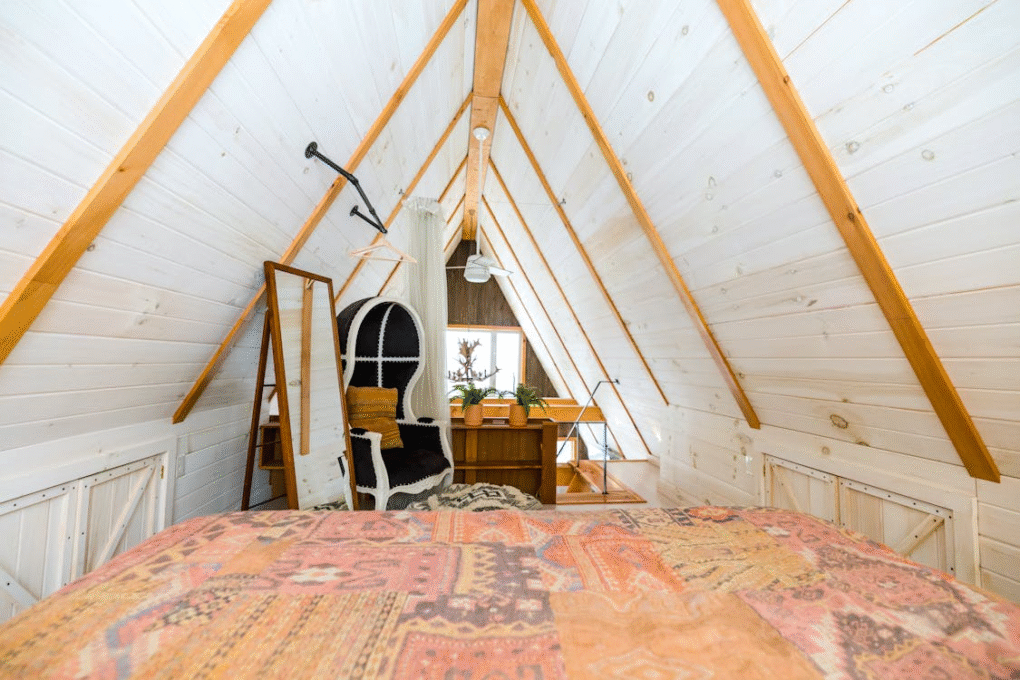
Many homes in Andover, MA, have attic spaces with hidden potential. Instead of using them for storage and forgotten boxes, more homeowners are looking to turn these areas into functional living spaces. Whether it’s a guest bedroom, playroom, or office, a finished attic can add comfort and value to a home.
But before making design plans or buying materials, there are a few things to think through. Attic renovations can get complicated. You’re working with a part of the home that wasn’t designed for everyday use.
It’s tempting to focus on flooring, paint, and furniture, but those are the final steps. The early stages—like structure and ventilation—will set the tone for how well the space works in the long run.
Roof Structure and Condition Come First
The first step in any attic renovation is looking at the roof. The structure will shape what you can or can’t do in the space. If your attic has a low pitch or shallow rafter space, that limits headroom. Some homes have W-shaped trusses that cut across the attic, making it tough to open the space without changing the frame.
Aside from the shape, the condition of the roof is also critical. Any signs of leaks, stains, sagging, or drafts need to be handled before you move forward. Renovating an attic without checking for water damage or poor ventilation can lead to mold or rot later. You don’t want to finish the space and then find out your shingles are failing or your roof vents are blocked.
In towns like Andover, where winter snow adds weight and summer heat pushes temperatures high, roof issues can show up fast. That’s why it helps to bring in a specialist before starting the work. For homeowners in the area, it’s worth getting an inspection from local Andover roofing professionals before you dive into the project. They can help spot issues that might delay your renovation, or worse, create problems after the work is done.
These professionals know the local weather patterns and how they affect roofing systems. They can also give guidance on ventilation options and insulation upgrades that match your roof type. Getting this kind of input early helps avoid backtracking during construction.
Know the Building Code Requirements
Once you’ve checked the roof, it’s time to look at the legal side. Attic spaces must meet building code rules to be used as livable rooms. These rules cover things like ceiling height, safe exits, insulation, and how you access the space.
Most codes require a ceiling height of at least 7 feet over 50% of the room. You’ll also need a window large enough to use as an emergency exit. If your attic only has a pull-down ladder, that will need to be replaced with a proper staircase. Each town has its own process, so it’s best to call your local office or speak with a contractor who’s worked on similar projects nearby.
Plan for HVAC and Air Circulation
Comfort matters in any living space. Attics tend to get very hot in the summer and drafty during winter. Without the right airflow and insulation, the space won’t feel usable year-round.
Start by thinking about how you’ll heat and cool the room. Some homeowners connect the attic to the home’s main HVAC system. Others choose ductless mini-split units, which are easier to install and don’t require new ducts. These units work well in smaller or oddly shaped rooms.
Ventilation also makes a big difference. If air doesn’t move properly, moisture can build up and affect both comfort and safety. Adding ridge vents, soffit vents, or an attic fan can help manage airflow. Talk with a contractor about what setup fits your home best. They’ll look at your current layout and give advice based on the square footage and roofline.
Adding insulation is just as important. Insulation helps control temperature and lowers utility bills. Fiberglass batts, spray foam, or blown-in insulation are all common choices. Each has pros and cons depending on how your attic is built.
Don’t Skip the Electrical and Lighting Layout
Before walls go up, plan where outlets, switches, and lights will go. Many older attics have little or no wiring. If you’re planning to use the space for work or guests, you’ll want reliable lighting and enough outlets for electronics.
Think about how the ceiling shape affects light placement. Sloped ceilings may limit where you can install standard fixtures. Recessed lighting works well in tight spaces and keeps the ceiling clean. Wall-mounted lights or small sconces are useful near beds or desks.
Talk to an electrician early in the process. They’ll know how to run wires safely and may suggest adding extra circuits if your attic will have heavy power use. It’s easier to install wiring before the drywall goes up than to go back and fix it later.
Smart lighting features, like dimmers or motion sensors, can add flexibility and save energy. These are small upgrades that make the space feel modern and user-friendly.
Think About Noise and Privacy
If your attic will be used for sleeping, working, or relaxing, sound control matters. Noise can move between floors and through walls more easily than people think. Footsteps, music, or conversations in the attic might be heard below, and vice versa.
Soundproofing the floor is a good starting point. Add insulation between floor joists and consider using dense subfloor materials. Some people also install sound-dampening underlayment or carpet padding to soften noise.
Walls and ceilings can be insulated with soundproof batting. Even if it doesn’t block all sound, it helps reduce echoes and keeps the space quieter.
Privacy matters too. If multiple people will use the attic, think about door placement and layout. Even small changes, like adding a hallway or divider, can create a more private and comfortable setup.
Attic renovations take time, but thoughtful planning helps the space reach its full potential. From roofing to airflow, every step shapes how the room will look, feel, and function. A clear plan and the right support make the difference between a frustrating project and a space you’ll love using for years.
Whether you’re building a quiet office, a cozy guest room, or a creative retreat, the attic can become one of the most useful areas in your home, with the right start.
